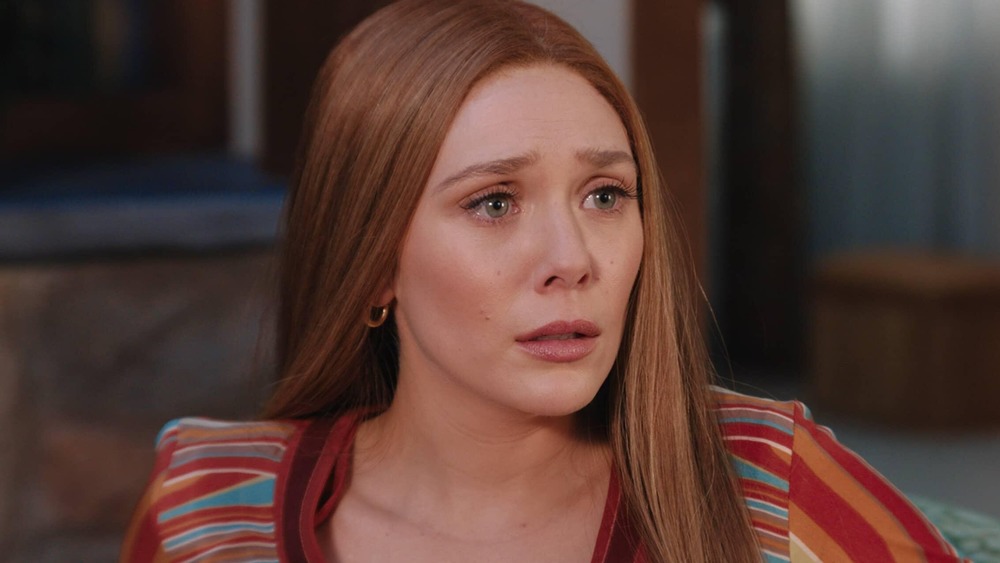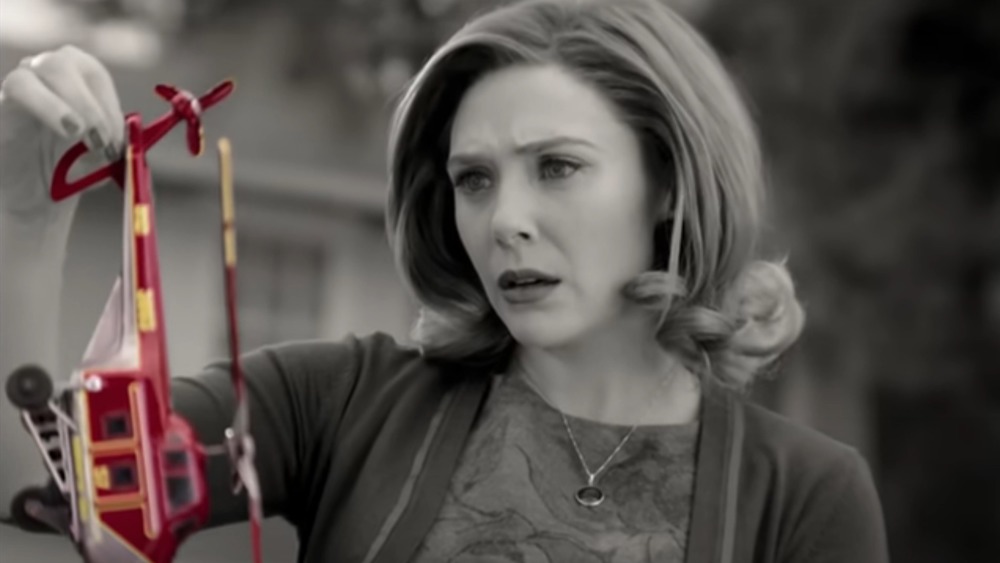Elizabeth Olsen Reveals Why WandaVision Was Uncomfortable
At this point, 23 movies in, the Marvel Cinematic Universe has found its rhythm. Fans have a general idea of what to expect from each movie: There will be extremely advanced technology, a villain bent on causing catastrophic destruction, and a hero or two to stop them, probably with the aforementioned technology and definitely with some cute quips. However, the Disney+ streaming series WandaVision set out to be the weird cousin of the MCU family, defying the conventions with an unlikely sitcom setting. Wanda Maximoff (Elizabeth Olsen) and her husband Vision (Paul Bettany) kick off the series with a jaunty theme song and charming '50s style hijinks — the worst that can happen is they fail to fit in to their new suburban community.
Not only is the style of the show completely different from anything else in the MCU, but the characters themselves are also in uncharted territory. Wanda, first introduced in Avengers: Age of Ultron, has been a side character who's only appeared in the ensemble films of the franchise — until now. Her character was built in short scenes nestled in the midst of action-packed movies that tackled much larger stories. Still, she wrestled with the ethical use of her telekinetic powers and faced a series of traumas: her parent's deaths, her twin Pietro's death, and then Vision's death (twice).
WandaVision, however, finds Wanda happily in love as she navigates a dinner party and magic show. It's a new side of her, and for Olsen, it was a huge step outside of her comfort zone.
Elizabeth Olsen was intimidated by WandaVision
Olsen and co-star Bettany were initially terrified to film the first episode of WandaVision in front of a live audience, and it was a lot of work to learn each sitcom's style of acting, but the series' unusual style wasn't the only part of WandaVision that challenged Olsen.
"I've only been working for 10 years, but there is this feeling where you start to get comfortable," Olsen told Elle. "WandaVision was the furthest thing from comfortable for me. It felt intimidating. The character is a completely different thing."
Olsen then shared that Wanda's story in the MCU has always been about her struggle with mental health. WandaVision, it seems, is embracing that to the fullest. "Wanda is trying to protect everything in her bubble, protect what she and Vision have and this experience," Olsen said. "I think everything she does is in response to keeping things together."
Marvel Studios president Kevin Feige convinced Olsen to do WandaVision when he told her the show's inspiration came from particular storylines in the comics. Neither has revealed which ones, but now four episodes in, it seems likely they discussed the narrative in which Wanda alters reality to cope with loss. The episode "We Interrupt This Program" insinuates that it's actually Wanda who has trapped a whole town in an alternate reality.
"We still live up to what Marvel does," Olsen said. "We just tell the story in a completely different way. It's a very emotional, female story and it's a story they haven't told yet for either of our characters."
With the nine-episode format, WandaVision can dive into Wanda's character in a way that's impossible amidst the fast-paced action of an Avengers movie. We didn't see much of her grieving process for Pietro, but as the cracks in her cheery facade begin to show, it seems the strange reality of WandaVision just might be a heartbreaking response to Vision's death.

